Air Conduction vs. Bone Conduction: Candidacy Guide for Bone Conduction Systems
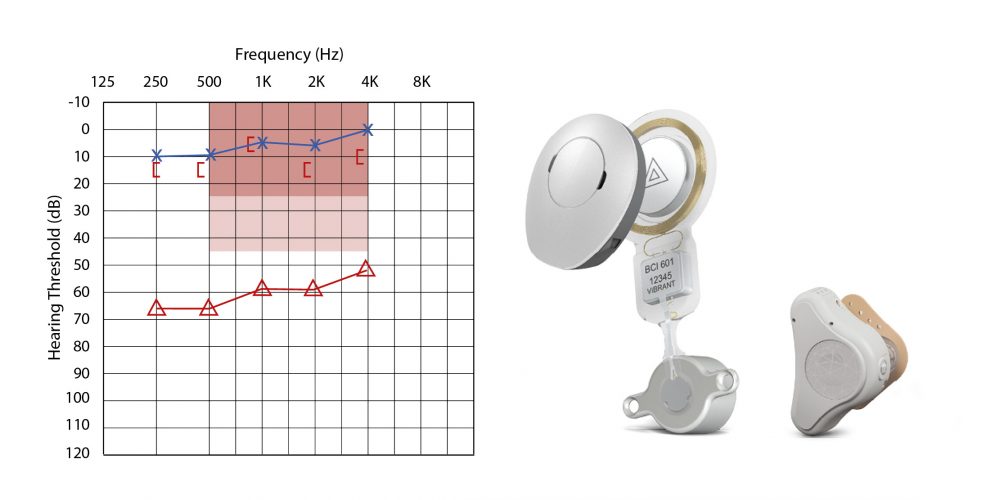
How do you choose the best treatment option for conductive hearing loss and mixed hearing loss? Do you look at reference audiograms, patient preference, or clinical guidelines? When should you step up to an implantable bone conduction system?
We put together a simple guide to air conduction and bone conduction thresholds and the air-bone gap to help you easily determine which bone conduction solution is right for each patient. This guide for clinicians covers conductive and mixed hearing loss, as well as bone conduction options for unilateral hearing loss.
First, we’ll have a quick review of the concepts and compare available bone conduction systems. Then we’ll go over audiograms and show how to determine the right bone conduction hearing solution for your patient.
Air Conduction & Bone Conduction Audiometry
Air Conduction Thresholds
In natural hearing, sound waves are carried through the air. Air conduction relies on the outer ear, middle ear, and inner ear. This makes air conduction audiometry an effective measure of everyday hearing ability.
Air conduction thresholds are usually marked with an O for the right side and an X for the left side.
Bone Conduction Thresholds
Bone conduction audiometry sends vibrations via a bone oscillator directly to the inner ear, so bone conduction thresholds should be equal to or better than air conduction thresholds in the same ear.
Bone conduction thresholds are often marked with an < for the right side or an > for the left side.
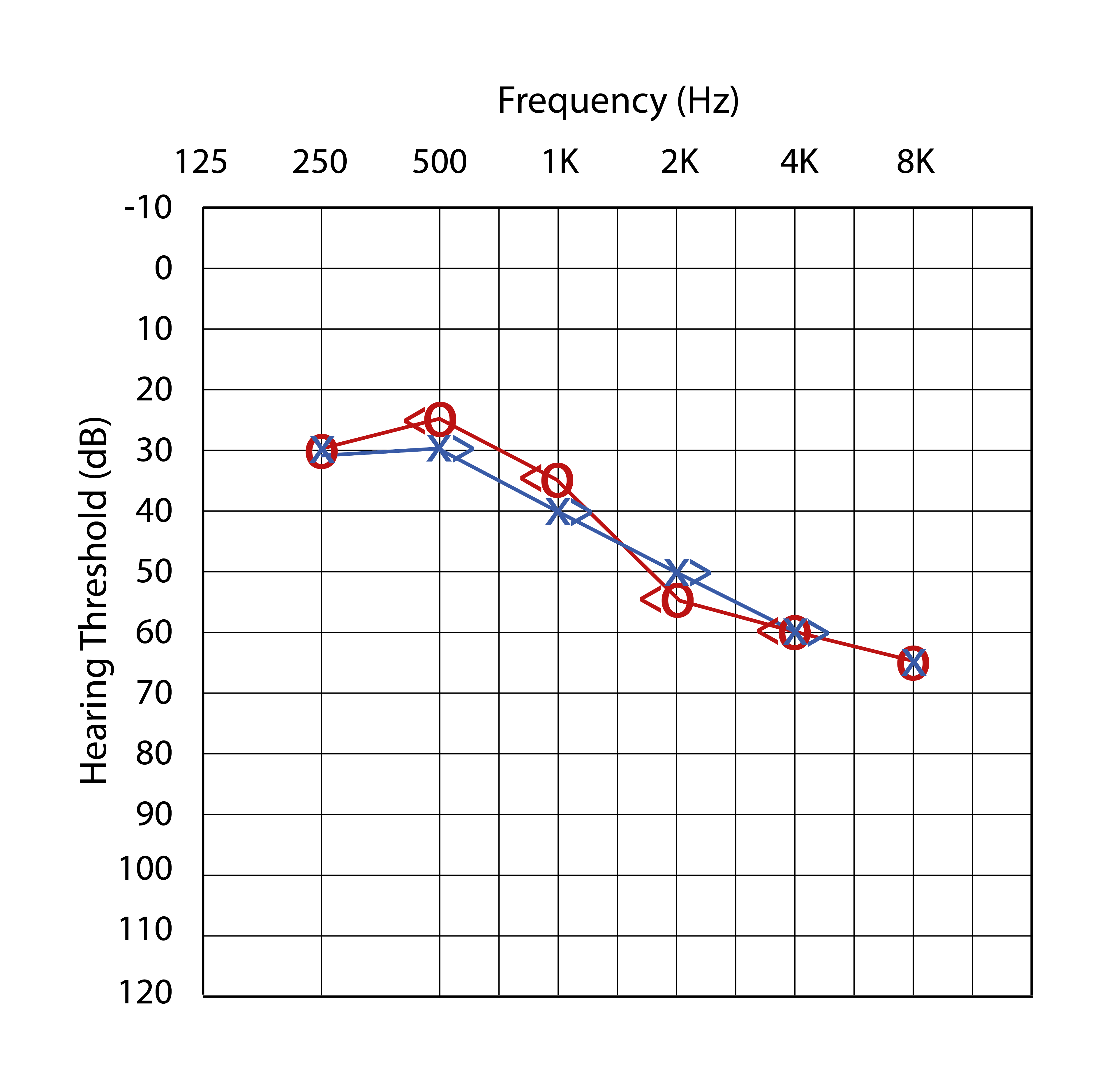
If air conduction and bone conduction thresholds are similar, this indicates that the outer ear and middle ear can carry sounds to the cochlea without resistance, but there is an issue in the inner ear or hearing nerve. This would be sensorineural hearing loss (SNHL).
Air-Bone Gap
What if air conduction thresholds and bone conduction thresholds are different? In this case we could speak of air-bone gap. Just like it sounds, this is the difference between air conduction thresholds and bone conduction thresholds.
[Air conduction threshold (dB)] – [Bone conduction threshold (dB)] = Air-bone gap (dB).
Understanding this simple measure can help you quickly identify if your patient’s hearing loss is sensorineural, conductive, or a mixed hearing loss, which is a combination of conductive and sensorineural hearing loss.
But why is it so important to identify the type of hearing loss?
With a pure sensorineural hearing loss, traditional hearing aids are generally effective, although it can be difficult if there is high-frequency hearing loss or a more severe degree of sensorineural hearing loss.
However, if there is a conductive hearing loss present, (above an air-bone gap of approximately 25–35 dB)) any amplification from a hearing aid cannot clearly and effectively be transmitted to the inner ear. This can lead to muffled, distorted sound quality from traditional hearing aids.
Here’s where bone conduction hearing solutions shine. A bone conduction system bypasses the conductive structures of the outer and middle ear, so it can send sound vibrations directly to the cochlea. This is what makes bone conduction solutions an ideal treatment option when conductive hearing loss is present.
Now let’s take a quick look at the bone conduction systems that we’ll cover in these candidacy guidelines.
Modern Bone Conduction Systems
In the end, the most effective bone conduction system is the one your patients will wear. It can be helpful to have multiple solutions available, but many bone conduction systems compromise comfort & wearability in exchange for hearing performance, or vice versa.
That’s why we created the only two bone conduction systems designed to combine healthy skin and optimal hearing performance for the best possible patient experience.
- Optimal hearing outcomes
- Healthy, intact skin
- Comfortable, discreet wearing options
ADHEAR
ADHEAR is a non-surgical bone conduction solution that uses a unique no-pressure adhesive adapter, so it offers all day wearing comfort. Thanks to this new design, ADHEAR can deliver hearing performance that matches SoundArc, Softband, and other non-surgical bone conduction systems—without any of the painful pressure and prominent headband.
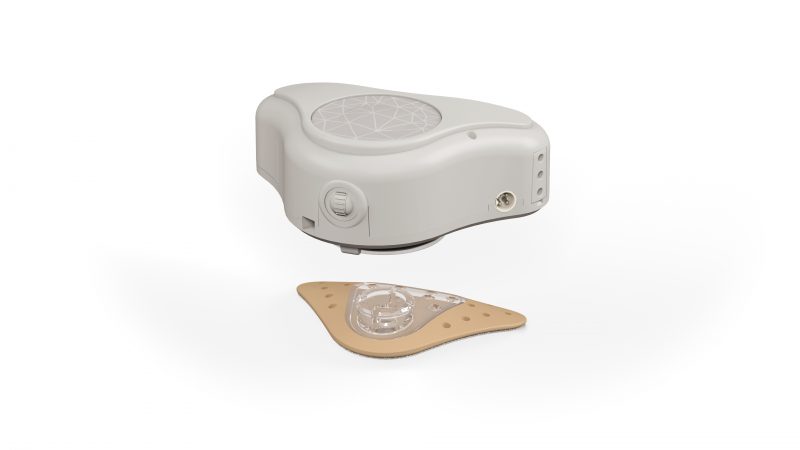
This combination of comfort and performance makes ADHEAR an ideal non-surgical choice for treating temporary or chronic conductive hearing loss in children and adults.
ADHEAR Candidacy
With the simple non-surgical adhesive adapter, your patients can easily test the immediate benefits of ADHEAR for themselves.
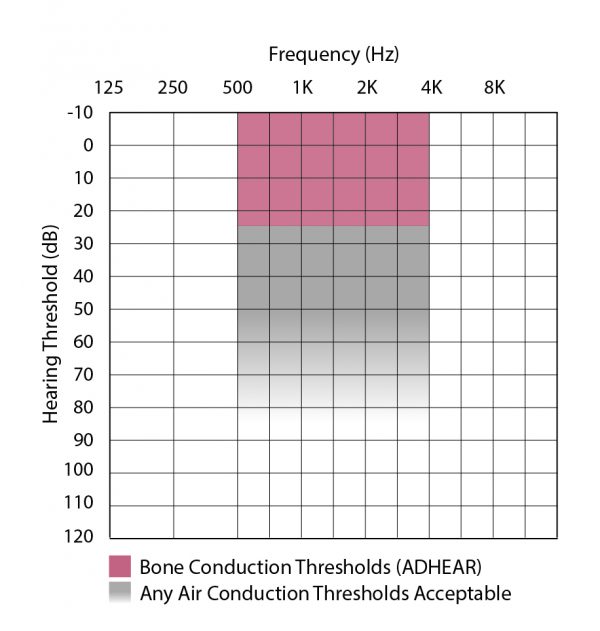
Bone conduction thresholds should be between 0–25 dB in the range of frequencies 500 Hz and 4,000 Hz.
- Any air conduction thresholds are acceptable, because ADHEAR relies on bone conduction.
- Temporary or chronic conductive hearing loss.
- Unilateral or bilateral hearing loss.
BONEBRIDGE
If your patients are ready for a reliable implantable solution to conductive hearing loss, or need a higher maximum power output, BONEBRIDGE is a one-of-a-kind active bone conduction implant that offers direct-drive amplification with no feedback.
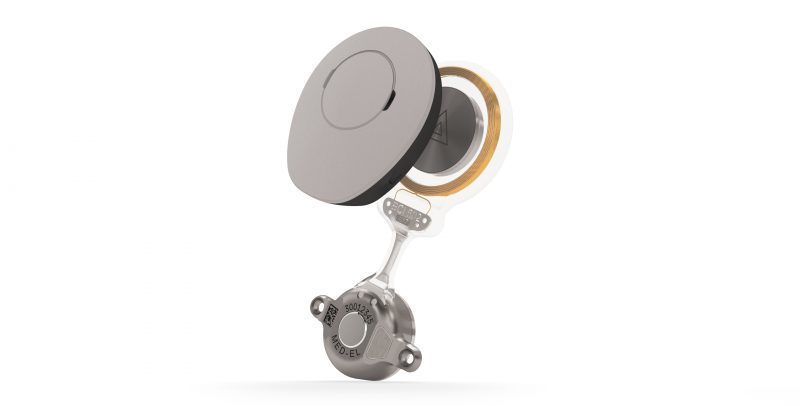
As the only active bone conduction implant, BONEBRIDGE is fully implanted under the skin, so your patients won’t have to worry about skin infections or osseointegration failures commonly associated with the percutaneous screw of the Baha Connect or Ponto systems. The external audio processor is held in place by gentle magnetic attraction, offering all-day wearing comfort.
BONEBRIDGE offers an excellent option for conductive or mixed hearing loss, as well as single-sided deafness.
BONEBRIDGE Candidacy
If your patients want a reliable, implantable bone conduction solution, BONEBRIDGE is the right choice. It’s also the best solution for patients who want more amplification, because BONEBRIDGE offers a higher maximum power output thanks to direct-drive active bone conduction. This transcutaneous direct-drive technology maximizes the efficiency of sound transfer and eliminates any microphone feedback for the best possible sound quality.
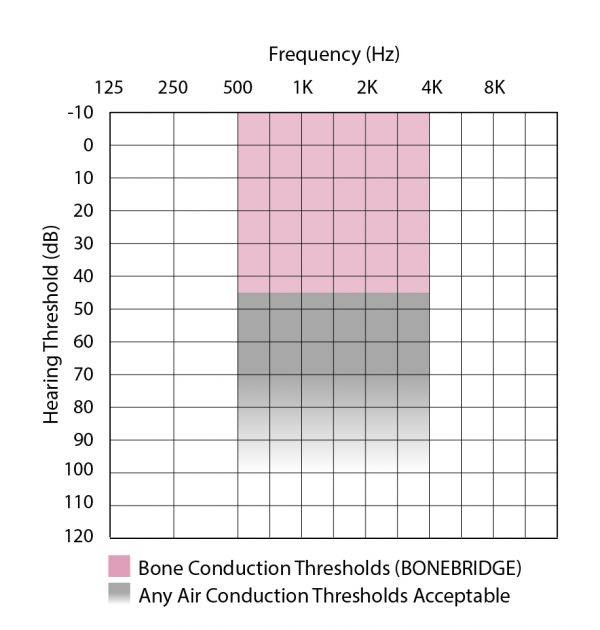
Bone conduction thresholds should be between 0–45 dB from 500Hz through 4,000 Hz.
- Any air conduction thresholds are acceptable.
- Ages 5 years and older.
- Absence of retro-cochlear or central auditory disorders.
Air-Bone Gap: Audiograms & Candidacy
If bone conduction thresholds are normal, but there’s a moderate air-bone gap (e.g 30 dB PTA), this indicates a pure conductive hearing loss. This is often caused by temporary or chronic conditions, such as:
- Otosclerosis (initial state)
- Stenosis of ear canal
- Chronic tympanic membrane perforation
- Persistent Eustachian tube dysfunction
- Persistently blocked ventilation tubes
- Chronic otitis externa
- Chronic otitis media with effusion (glue ear)
- Chronic wax impaction
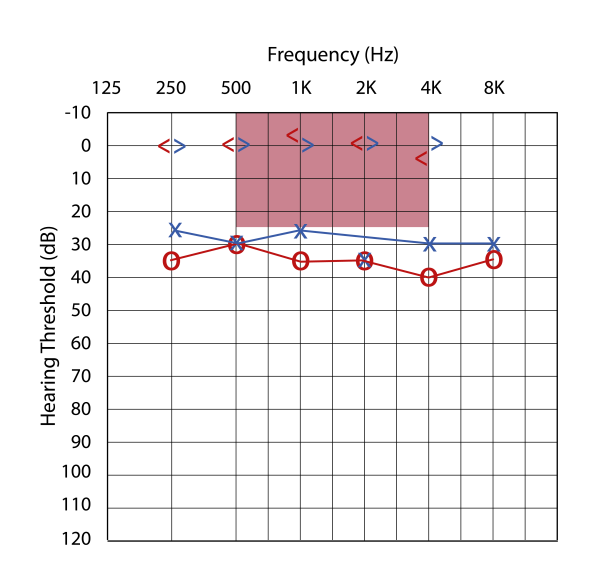
Normal bone conduction thresholds indicate that this 30dB air-bone gap is a case of mild-to-moderate conductive hearing loss.
ADHEAR would be an effective non-surgical solution for temporary conductive hearing loss, or chronic conditions such as damaged ossicles, chronic otitis media, or other causes of conductive hearing loss.
Large Air-Bone Gap
A large air-bone gap indicates severe conductive hearing loss. This could be caused by external auditory canal atresia, or other significant blockage of sound conduction. If the bone conduction thresholds are relatively normal, this indicates a pure conductive hearing loss.
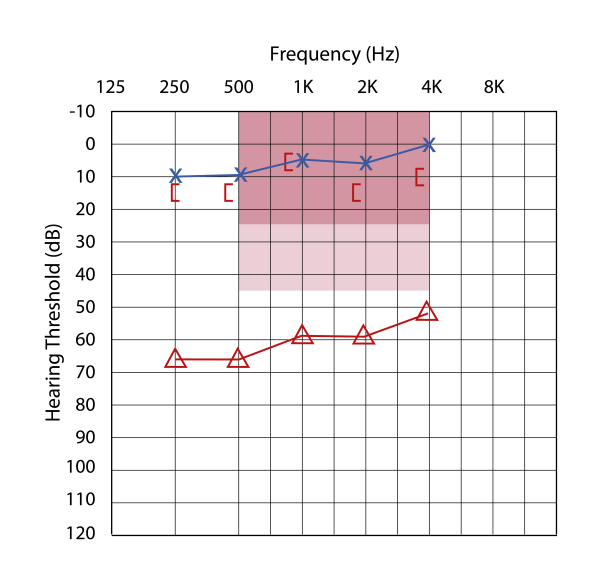
In this case, the cochlea is able to effectively detect sounds through bone conduction (BC thresholds of 0-20 dB), but the outer ear and middle ear structures are damaged or completely missing (high air conduction thresholds).
An ADHEAR non-surgical solution can be an effective treatment option in these cases. If the conductive hearing loss is stable, the BONEBRIDGE implant offers a straightforward, permanent solution that combines outstanding comfort and hearing performance.
Moderate Air-Bone Gap: Mixed Hearing Loss
Now for a challenge: A moderate air-bone gap (e.g 30 dB PTA) indicates some degree of conductive hearing loss. But is it a case of moderate conductive hearing loss or something else?

In this case, there is also a 30dB air-bone gap. But, as you’ll notice, the bone conduction thresholds in are in the mild-to-moderate hearing loss range (BC thresholds of 20–40 dB). This indicates that this hearing loss is caused by a combination of mild-to-moderate sensorineural hearing loss, plus a conductive hearing loss.
For mixed hearing loss, a bone conduction system can be very effective, but more amplification is needed to overcome the sensorineural element at the cochlea. In this case, the direct-drive design of the BONEBRIDGE Active Bone Conduction implant is the ideal treatment option.
Bonus Audiogram: Single-Sided Deafness
What if air and bone conduction thresholds are normal in one ear, but there’s severe-to-profound sensorineural hearing loss in the other ear?

CROS hearing aids may be a treatment option for hearing loss in one ear, but it can be uncomfortable to always wear a hearing aid in the hearing ear. It can also cause issues with the occlusion effect in the healthy ear.
Thankfully, in cases of unilateral hearing loss or single-sided deafness, both ADHEAR and BONEBRIDGE can be comfortable and effective treatment options. Either of these bone conduction solutions can send sounds from the deafened side of the head through the skull to the hearing cochlea. Make sure to check out our detailed candidacy guide on bone conduction solutions for single-sided deafness.
Best for Bone Conduction
Together, ADHEAR and BONEBRIDGE cover a wide indication range for your patients. By combining healthy skin and optimal hearing performance, they offer the best hearing experience for your patients with conductive and mixed hearing loss.
- Optimal hearing outcomes
- Healthy, intact skin
- Comfortable, discreet wearing options
Subscribe & Share
Ready to learn more about the benefits of ADHEAR for your patients?
Discover BCI 602, the next generation of BONEBRIDGE Active Bone Conduction Implant.
Always A Step Ahead: New BCI 602 Active Bone Conduction Implant for BONEBRIDGE
Have a question about candidacy for MED-EL bone conduction systems? Check out our interactive Candidate Selection Tool or let us know with our simple contact form!
*Not all products, features, and indications shown are available in all areas. Please contact your local MED-EL representative for more information.
CTA Form Success Message
Send us a message
Field is required
John Doe
Field is required
name@mail.com
Field is required
What do you think?
The content on this website is for general informational purposes only and should not be taken as medical advice. Please contact your doctor or hearing specialist to learn what type of hearing solution is suitable for your specific needs. Not all products, features, or indications shown are approved in all countries.
Peter
October 19, 2023
I have significant loss in the 3000hz to 4000hz range in both ears, as well as Tinnitus. I understand that your devices don’t deal with Tinnitus, but I am also aware that patients with hearing loss have louder Tinnitus and there is no cure as of now for Tinnitus. So quieter Tinnitus would be a blessing too. So my question is, would Boneridge work for me? As for hearing aids, I simply cannot afford them, and the OTC devices are from hell - my opinion. Looking for a new lease on life here. Thank you for your time and effort.
MED-EL
October 19, 2023
Hi Peter, thanks for reaching out. We recommend contacting your medical experts as well as your local MED-EL team via https://www.medel.com/clinic-finder as they are best equipped to help you. Kind regards, Gordana

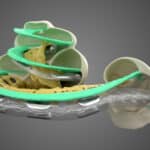

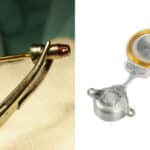
Conversation
1 Comment